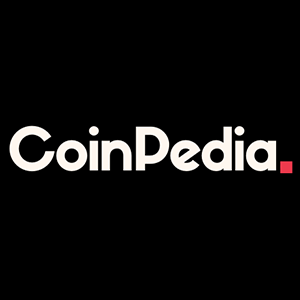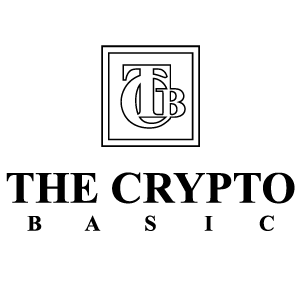Revolutionary German Blockchain Bond: NRW.BANK’s €100M Polygon Issuance Signals Major Shift
8 min read
Are you ready to witness a monumental shift in the world of finance? The lines between traditional banking and the innovative realm of blockchain technology are blurring faster than ever. In a move that’s sending ripples across the financial landscape, NRW.BANK, a prominent German state-owned bank, has just made history. They’ve successfully issued a colossal €100 million (approximately $117 million) blockchain bond, marking a significant milestone not just for the bank, but for the entire ecosystem of German blockchain bond issuances and beyond. This isn’t just another transaction; it’s a powerful statement about the growing legitimacy and potential of digital assets within regulated financial systems. What Makes This German Blockchain Bond So Significant? The issuance of a €100 million German blockchain bond by NRW.BANK is far from a trivial event. It represents a confluence of regulatory foresight, technological adoption, and a clear signal of confidence from traditional financial institutions in distributed ledger technology (DLT). For the first time, a state-owned bank in Germany has leveraged a public blockchain network for such a substantial financial instrument. This bond was not merely an experimental token; it was formally registered as a crypto security under Germany’s Electronic Securities Act (eWpG). This legal framework is crucial, as it provides the necessary regulatory clarity and legal certainty for digital bonds, making them attractive to institutional investors. Regulatory Clarity: The eWpG provides a robust legal foundation for electronic securities, removing ambiguities that often deter large financial players from blockchain initiatives. Institutional Trust: NRW.BANK’s participation lends significant credibility to the concept of blockchain-issued financial instruments, paving the way for other banks and corporations. Scale and Value: A €100 million issuance is not a small pilot. It demonstrates the capability of blockchain networks to handle substantial financial transactions securely and efficiently. This landmark issuance underscores Germany’s proactive approach to embracing digital finance, positioning itself as a leader in regulating and integrating blockchain into its financial infrastructure. Why the Polygon Blockchain? One of the most intriguing aspects of this issuance is the choice of the Polygon blockchain . Often associated with decentralized applications (dApps) and NFTs, Polygon (specifically its PoS chain, which is often referred to as Polygon in general discourse) is rapidly gaining traction in the enterprise and institutional space due to its unique attributes. So, why did a German state-owned bank opt for this particular network? The Polygon network offers several compelling advantages that make it an attractive platform for issuing digital securities: Scalability: As an Ethereum scaling solution, Polygon provides high transaction throughput and lower fees compared to the main Ethereum network, which is critical for institutional use cases requiring efficiency. Security: While a sidechain, Polygon benefits from the underlying security of Ethereum, which is a battle-tested and robust blockchain. EVM Compatibility: Its compatibility with the Ethereum Virtual Machine (EVM) means developers can easily port existing Ethereum-based solutions, and it integrates seamlessly with a vast ecosystem of tools and services. Sustainability: Polygon has committed to carbon neutrality and aims to be carbon negative, aligning with the growing ESG (Environmental, Social, and Governance) concerns of major financial institutions. Growing Ecosystem: Polygon’s vibrant and expanding ecosystem of developers, dApps, and partnerships makes it a versatile platform for various financial innovations. The decision to utilize the Polygon blockchain for such a significant bond issuance highlights the network’s evolution beyond just consumer-facing applications to becoming a serious contender for enterprise-grade financial solutions. It signifies a maturation of the blockchain space where performance, cost-efficiency, and a robust developer environment are paramount. The Dawn of the Digital Bond Era What exactly is a digital bond , and why is it considered a game-changer? A digital bond, or tokenized bond, is essentially a traditional bond instrument represented as a digital token on a blockchain. This seemingly simple shift unlocks a plethora of benefits that can revolutionize how debt is issued, traded, and managed. Traditional bond issuance involves numerous intermediaries, manual processes, and often lengthy settlement times. In contrast, a digital bond offers: Increased Efficiency: Automation of processes like issuance, coupon payments, and redemptions through smart contracts reduces manual errors and processing times. Enhanced Transparency: All transactions are recorded on an immutable ledger, providing a clear and auditable trail. Greater Liquidity: The potential for 24/7 trading on global blockchain networks can improve market liquidity, especially for illiquid assets. Reduced Costs: By disintermediating various steps in the bond lifecycle, issuance and maintenance costs can be significantly lowered. Fractional Ownership: In some cases, tokenization can allow for fractional ownership of high-value assets, democratizing access for smaller investors. The NRW.BANK issuance is a powerful testament to the viability of the digital bond , moving it from a theoretical concept to a practical, large-scale financial instrument. This is not just about digitizing a paper process; it’s about fundamentally rethinking the infrastructure of capital markets. Understanding Tokenized Securities: A Deeper Dive The concept of a digital bond falls under the broader umbrella of tokenized securities . Tokenization involves converting real-world assets – whether they are bonds, real estate, equities, or even art – into digital tokens on a blockchain. Each token represents a verifiable share or claim to the underlying asset. The process typically involves: Legal Structuring: Ensuring the token complies with existing securities laws and regulations, as seen with Germany’s eWpG. Smart Contract Creation: Developing the code that governs the token’s behavior, including ownership, transfer rules, and any associated rights (e.g., dividend payments for equity tokens, interest payments for bond tokens). Issuance on Blockchain: Minting the tokens on a chosen blockchain network, like the Polygon blockchain in this case. Custody and Management: Establishing secure methods for holding and managing these digital assets. The allure of tokenized securities lies in their ability to unlock new levels of efficiency, liquidity, and accessibility. They have the potential to: Streamline capital raising processes for companies. Facilitate cross-border transactions with greater ease. Enable new forms of financial products and services. Reduce the operational complexities and risks associated with traditional securities. This movement is not about replacing traditional finance entirely but rather enhancing it with the benefits of blockchain technology, creating a more interconnected and efficient global financial system. The Growing Trend of Institutional Crypto Adoption NRW.BANK’s move is a clear indicator of a significant trend: the accelerating pace of institutional crypto adoption . For years, cryptocurrencies and blockchain were largely confined to niche tech enthusiasts and speculative traders. However, as the technology matures and regulatory frameworks evolve, major financial players are increasingly exploring and integrating these innovations. What’s driving this wave of institutional crypto adoption ? Efficiency Gains: The promise of faster, cheaper, and more transparent transactions is irresistible for institutions dealing with large volumes and complex operations. New Revenue Streams: Offering digital asset services, tokenized products, and blockchain-based solutions opens up new markets and revenue opportunities. Competitive Pressure: As early movers demonstrate success, others are compelled to explore blockchain to remain competitive. Client Demand: A growing number of institutional clients are showing interest in digital assets, prompting banks to adapt. Regulatory Clarity: Jurisdictions like Germany providing clear legal frameworks significantly reduce the perceived risk for institutions. From central banks exploring CBDCs (Central Bank Digital Currencies) to investment banks launching crypto trading desks and asset managers offering digital asset funds, the financial world is undergoing a profound transformation. The NRW.BANK German blockchain bond on the Polygon blockchain is a prime example of this evolution, demonstrating how DLT can be seamlessly integrated into core banking operations. Benefits and Challenges of Blockchain Bonds While the advantages of blockchain bonds are compelling, it’s also important to acknowledge the challenges that need to be addressed for widespread adoption. Benefits: Speed and Efficiency: Drastically reduces issuance and settlement times from days to hours or even minutes. Cost Reduction: Minimizes reliance on intermediaries, lowering fees and operational costs. Increased Transparency: All transactions are recorded on an immutable ledger, enhancing auditability and reducing fraud. Enhanced Accessibility: Potentially allows for fractional ownership and broader investor participation. Programmability: Smart contracts can automate interest payments, redemptions, and compliance checks. Global Reach: Facilitates cross-border transactions and access to international capital markets. Challenges: Regulatory Complexity: Navigating diverse and evolving legal frameworks across different jurisdictions remains a hurdle. Interoperability: Ensuring different blockchain networks can communicate and transact seamlessly is crucial for a truly global market. Scalability Concerns: While Polygon addresses some of this, truly massive volumes might still pose challenges for some public blockchains. Security Risks: Smart contract vulnerabilities, cyberattacks, and private key management remain significant concerns. Market Liquidity: Building sufficient liquidity in nascent digital bond markets takes time and widespread adoption. Talent Gap: A shortage of skilled professionals who understand both traditional finance and blockchain technology. What’s Next for Digital Securities? The NRW.BANK’s successful issuance of a digital bond on the Polygon blockchain is not an isolated event; it’s a stepping stone. We can anticipate several key developments in the near future: More Institutional Participation: Expect other banks, corporations, and governments to follow suit, exploring their own tokenized bond issuances. Diversification of Tokenized Assets: Beyond bonds, we’ll likely see more real estate, private equity, and even art being tokenized, expanding the universe of tokenized securities . Evolution of Regulatory Frameworks: More countries will likely develop comprehensive legal frameworks similar to Germany’s eWpG to accommodate digital assets. Increased Interoperability Solutions: Efforts to connect different blockchains and traditional financial systems will intensify, creating a more fluid ecosystem. Rise of Hybrid Models: We might see a blend of traditional and blockchain-based systems, leveraging the best of both worlds. This monumental step by NRW.BANK serves as a powerful case study, demonstrating the practical application of blockchain in traditional finance. It’s a clear signal that institutional crypto adoption is not just a buzzword but a tangible reality reshaping global capital markets. Conclusion: A New Chapter in Finance Unfolds The issuance of the €100 million German blockchain bond by NRW.BANK on the Polygon blockchain marks a truly historic moment for the financial industry. It is a powerful affirmation of the maturity and potential of blockchain technology to transform traditional financial instruments. This event not only validates the concept of a digital bond but also highlights Germany’s forward-thinking regulatory environment and the growing wave of institutional crypto adoption worldwide. As tokenized securities become more commonplace, we are witnessing the dawn of a new era in finance – one characterized by unprecedented efficiency, transparency, and accessibility. The future of capital markets is increasingly digital, and today’s news is a compelling glimpse into that exciting reality. To learn more about the latest crypto market trends, explore our article on key developments shaping institutional crypto adoption and the future of digital finance.

Source: Bitcoin World



